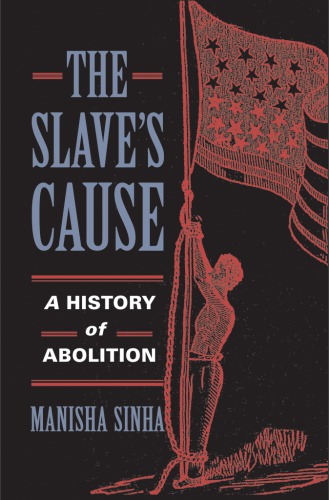
The Slave's Cause
A History of Abolition
کتاب های مرتبط
- اطلاعات
- نقد و بررسی
- دیدگاه کاربران
نقد و بررسی

December 15, 2015
Comprehensive survey of the abolitionist movement in Colonial and independent America. "The history of abolition begins with those who resisted slavery at its inception," writes Sinha (Univ. of Massachusetts; The Counterrevolution of Slavery: Politics and Ideology in Antebellum South Carolina, 2000) by way of opening, though one wonders if that resistance could not be traced farther back than 1721. She continues: trans-Atlantic slavery was an interracial affair, and without the resistance of African slaves themselves, the abolitionist movement in the dominant white society would not have taken hold. For instance, black abolitionists such as Paul Cuffe and John Marrant had traveled to Britain in order to build an "antislavery wall" of political opposition to a trade that had once flourished there. In this endeavor, they paved the way for William Lloyd Garrison, who, backed by largely unheralded black abolitionists such as Thomas Van Rensselaer and David Ruggles, was instrumental in building the second wave of abolitionism in the new republic. Interestingly, Sinha examines the cross strands of politics that sometimes united and sometimes divided the abolitionist movement as it grew: John Brown, for instance, is rightly considered a prime mover in the eventual demolishing of slavery in the United States, but his armed insurrectionary strategy (leading to modern, anachronistic efforts to "label Brown a terrorist") alienated pacifists in the cause. Leading abolitionists of the turbulent 1820s had the goal of "marrying abolition with feminism, communitarian, and workingmen's movements," to say nothing of temperance. Sinha's capable but stolid; one wishes that more of, say, Jill Lepore's or Doris Kearns Goodwin's spirit pervaded the proceedings, especially in recounting the tangled politics underlying the Lincoln administration's legislative accomplishments. Still, though it's no Team of Rivals, the book covers a great deal of ground well. Wide-ranging and admirably ambitious, to be read alongside Hugh Thomas' The Slave Trade (1997) and Eric Foner's The Fiery Trial (2010), among other recent books in the field.
COPYRIGHT(2015) Kirkus Reviews, ALL RIGHTS RESERVED.

Starred review from February 1, 2016
Sinha's book is a tour de force that surpasses all previous works in scope, scale, and scholarship. Sinha (history, Afro-American studies, Univ. of Massachusetts Amherst; The Counterrevolution of Slavery) has deeply mined primary sources from antislavery writers on both sides of the Atlantic to discover not only a vibrant transatlantic antislavery movement that, in various iterations, ran from the 18th century to slavery's legal end in the 19th century but also a persistent antislavery witness that encompassed other reforms, embraced both blacks and whites, and drew on women as much as men. She challenges popular notions of abolition that emphasize the efforts of whites by showing that black resistance was "the heart" of the abolitionist cause and that blacks were as much the authors and architects of antislavery ideas and institutions. Indeed, by Sinha's account, it is the symbiotic nature of abolition that gave it a strength and durability far beyond the numbers of people committed to the cause. VERDICT Sinha doesn't extend her story past the Emancipation Proclamation in 1865; that subject should be her next book, for as many abolitionists understood then, slavery was not dead until the racism and greed that sustained and profited from it were extinguished. In that regard, Sinha's powerful account speaks to the slave's cause today.--Randall M. Miller, St. Joseph's Univ., Philadelphia
Copyright 2016 Library Journal, LLC Used with permission.

























دیدگاه کاربران